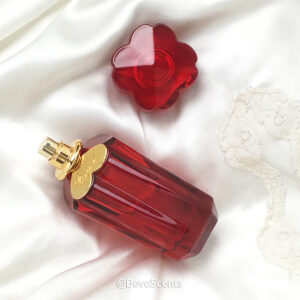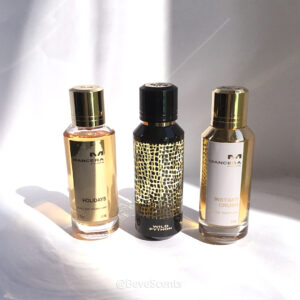Have you ever wanted to create your own signature scent that reflects your personality and mood? If so, you might want to try layering perfumes. Layering perfumes is the art of mixing two or more fragrances to create a unique and customized blend. It’s a fun and creative way to express yourself and experiment with different scents. But how do you layer perfumes like a pro? Here are some tips and tricks to help you get started.
Stick to Light Scents
When layering perfumes, it’s best to stick to light scents that won’t overpower each other or your senses. Heavy scents, such as oud or vanilla, can be difficult to layer because they tend to dominate other scents. If you want to use a heavy scent, use it sparingly and as a base layer.
Light scents, on the other hand, are easier to layer because they are more subtle and versatile. Light scents include fresh, clean, airy, or aquatic notes, such as citrus, green tea, cucumber, or watermelon. You can layer light scents with other light scents, or use them as top layers to add a burst of freshness and brightness.
Wear Your Scents in Different Places
Another tip for layering perfumes is to wear your scents in different places on your body. This can help you create a more complex and dynamic scent that changes as you move. For example, you can spray one scent on your wrists and another on your neck. Or you can spray one scent on your chest and another on your ankles.
You can also wear your scents on different parts of your clothing or accessories, such as your scarf, hat, or hair. This can help you diffuse your scent more evenly and subtly throughout the day.
Find Perfumes that Use the Same Notes
One of the easiest ways to layer perfumes is to find perfumes that use the same notes in their composition. This can help you create a harmonious and coherent blend that enhances the original scents without clashing with them. For example, if you have a favorite citrus fragrance but you feel it doesn’t last long enough, you can layer it with another perfume that has a citrus note in its base or heart.
You can also use single-note perfumes under or over an existing scent to boost or modify it. For example, if you want to add some romance to your scent, you can layer it with a rose perfume. Or if you want to add some warmth and depth to your scent, you can layer it with a musk perfume. Or if you want to make your scent more sensual, you can layer it with a jasmine perfume. Or if you want to make your scent more cozy and warm, you can layer it with a vanilla perfume.
Some popular perfume notes that you can use for layering are:
- Bergamot: A citrus note that adds freshness and brightness.
- Rose: A floral note that adds elegance and romance.
- Sandalwood: A woody note that adds warmth and depth.
- Lavender: A herbal note that adds calmness and relaxation.
- Amber: A sweet and resinous note that adds richness and sophistication.
Know Your Scent Families
Perfumes are divided into notes and families. Notes are the individual ingredients that make up a fragrance, such as rose, vanilla, or lemon. Families are the categories that group similar notes together, such as floral, amber, woody, or citrus. Knowing your scent families can help you choose compatible perfumes to layer.
As a general rule, perfumes from the same family tend to work well together, as they share common elements. For example, you can layer floral perfumes with other floral perfumes, or woody perfumes with other woody perfumes. You can also mix perfumes from different families that have complementary notes, such as floral and fruity, or amber and spicy.
Some of the most popular perfume families are:
- Floral: This family includes perfumes that smell like fresh-cut flowers or have a powdery note to them. Floral perfumes are usually feminine, romantic, and elegant. Some examples of floral notes are rose, jasmine, lily, and orchid.
- Amber: This family includes perfumes that smell exotic, warm, and sensual. Amber perfumes often have spicy, sweet, or resinous notes, such as vanilla, amber, musk, and cinnamon. Examples of amber notes are patchouli, sandalwood, incense, and oud.
- Woody: This family includes perfumes that smell earthy, rich, and cozy. Woody perfumes often have woody, smoky, or leather notes, such as cedar, vetiver, oakmoss, and leather. Some woody notes are pine, birch, juniper, and tobacco.
- Fresh: This family includes perfumes that smell clean, bright, and refreshing. Fresh perfumes often have citrusy, green, or aquatic notes, such as lemon, bergamot, grass, and watermelon. Fresh notes include grapefruit, mint, cucumber, and sea salt.
Layer Perfumes from Different Scent Families
If you want to get more creative and adventurous with your layering, you can try mixing perfumes from different scent families that have complementary notes. This can help you create a unique and complex scent that combines different aspects of your personality and mood.
For example, you can mix a floral perfume with a woody perfume to create a feminine and sophisticated scent, such as J’adore by Dior and Coco Mademoiselle by Chanel. Or you can mix a fresh perfume with an amber perfume to create a refreshing and sensual scent, such as Acqua di Gioia by Giorgio Armani and Black Orchid by Tom Ford.
The key to mixing perfumes from different scent families is to balance the intensity and contrast of the notes. You don’t want one perfume to overpower or clash with the other. You also want to avoid mixing too many perfumes or notes, as this can result in a confusing and unpleasant scent.
A good way to start mixing perfumes from different scent families is to use a fragrance wheel as a guide. The fragrance wheel is a circular diagram that shows the relationship between the different scent families and subfamilies. The scents that are closer to each other on the wheel are more similar and compatible, while the scents that are further away from each other are more different and contrasting.
You can use the fragrance wheel to find perfumes that share some notes or have some contrast, depending on the effect you want to achieve. For example, if you want to create a harmonious and coherent blend, you can choose perfumes that are next to each other on the wheel, such as floral and fruity, or woody and amber. If you want to create a surprising and dynamic blend, you can choose perfumes that are opposite to each other on the wheel, such as floral and woody, or fresh and amber.
Vary Your Products
Another way to layer perfumes is to vary your products and use different forms of fragrance. For example, you can use a scented lotion after your shower and then spray a perfume on top of it. Or you can use a perfume oil on your pulse points and then spray a perfume on your clothes.
Using different products can help you increase the longevity and intensity of your scent, as well as create different effects and textures. For example, lotion can moisturize your skin and make your scent last longer. Oil can give your scent a richer and more concentrated feel. Spray can give your scent a lighter and more diffused feel.
Give It Time
One of the most important tips for layering perfumes is to give it time. Don’t judge your scent right away after spraying it on your skin or clothes. Perfumes need time to settle and develop on your skin and interact with each other.
Wait at least 10 minutes before smelling your scent and deciding if you like it or not. You might be surprised by how different it smells after a few minutes.




